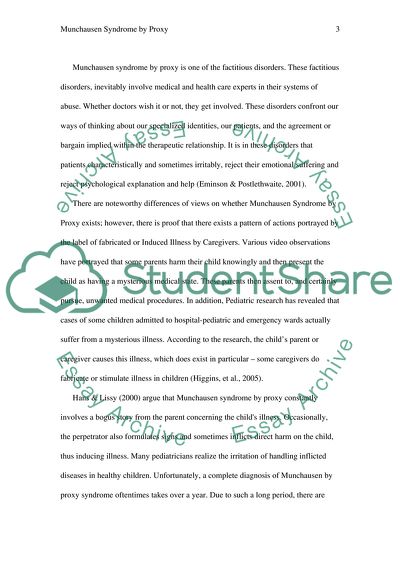Cite this document
(Munchausen Syndrome by Proxy Research Paper Example | Topics and Well Written Essays - 2500 words, n.d.)
Munchausen Syndrome by Proxy Research Paper Example | Topics and Well Written Essays - 2500 words. Retrieved from https://studentshare.org/health-sciences-medicine/1744824-munchausen-syndrome-by-proxy
Munchausen Syndrome by Proxy Research Paper Example | Topics and Well Written Essays - 2500 words. Retrieved from https://studentshare.org/health-sciences-medicine/1744824-munchausen-syndrome-by-proxy
(Munchausen Syndrome by Proxy Research Paper Example | Topics and Well Written Essays - 2500 Words)
Munchausen Syndrome by Proxy Research Paper Example | Topics and Well Written Essays - 2500 Words. https://studentshare.org/health-sciences-medicine/1744824-munchausen-syndrome-by-proxy.
Munchausen Syndrome by Proxy Research Paper Example | Topics and Well Written Essays - 2500 Words. https://studentshare.org/health-sciences-medicine/1744824-munchausen-syndrome-by-proxy.
“Munchausen Syndrome by Proxy Research Paper Example | Topics and Well Written Essays - 2500 Words”, n.d. https://studentshare.org/health-sciences-medicine/1744824-munchausen-syndrome-by-proxy.


